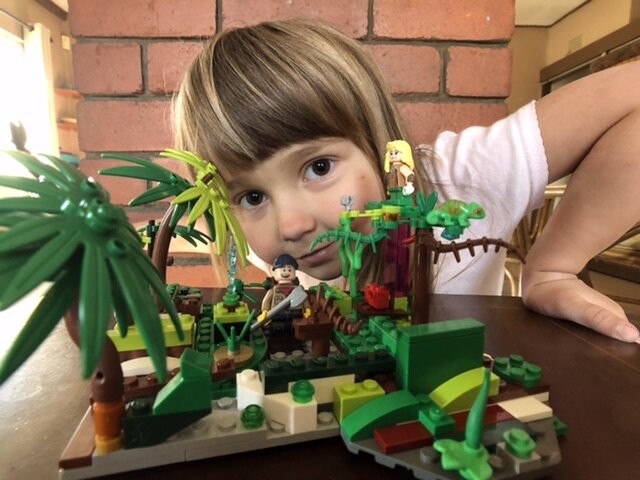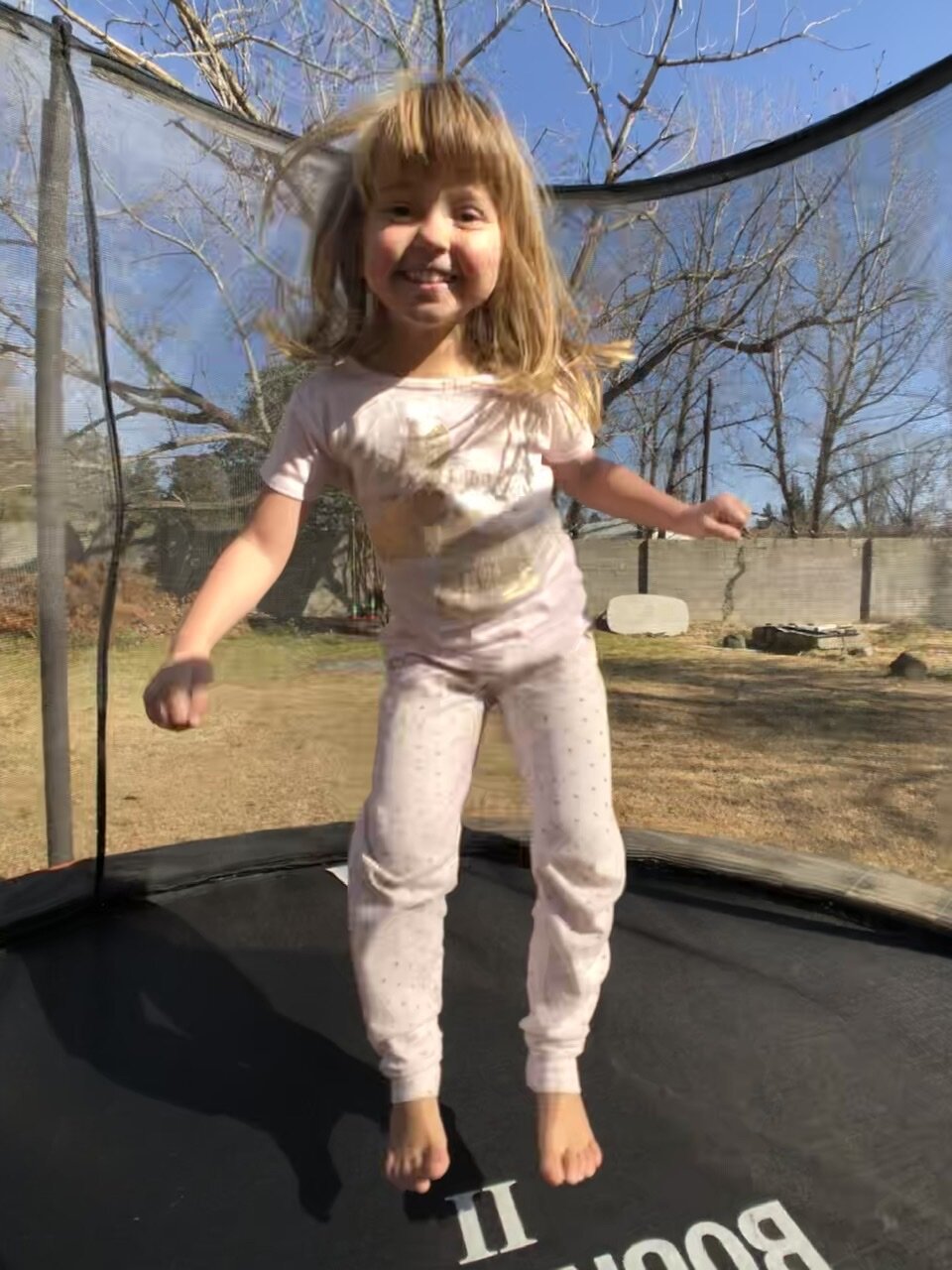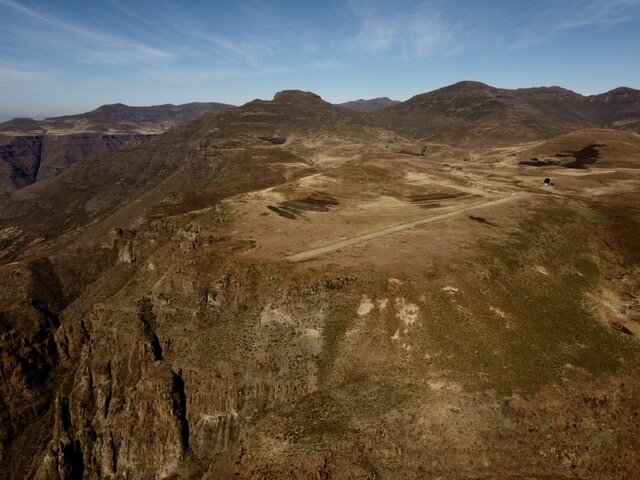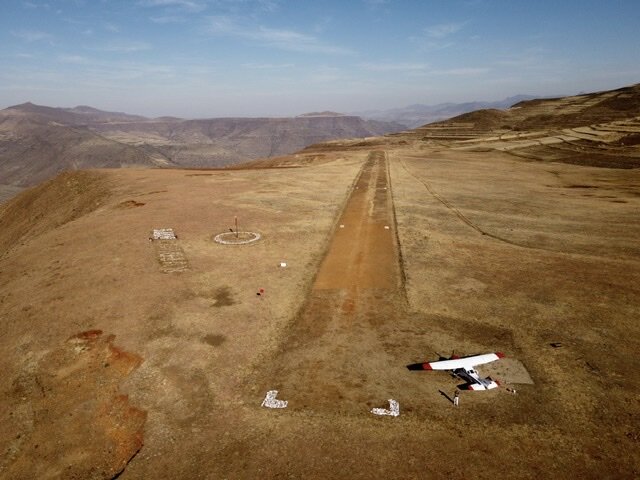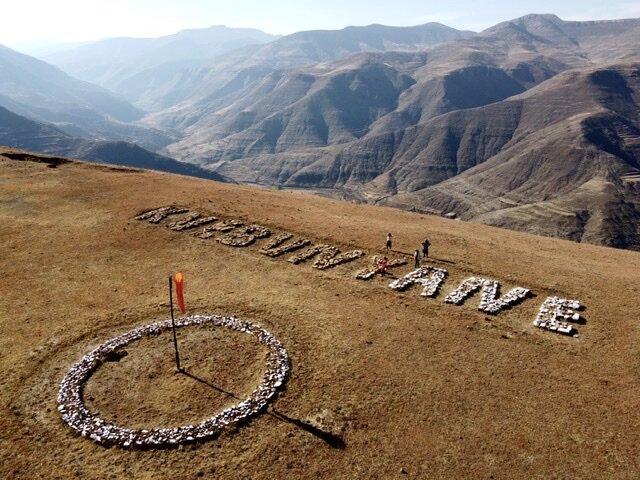We have two types of windy days in Lesotho. There are the days where you don’t even preflight, because you know that it’s not flyable, and then there are the other days: Windy, and challenging, but not windy enough to call it off. Yesterday was one of those days.
The previous day had been the windiest in the last few months. Bryan had flown and had told me that it was hard work, but doable. This day was a little better, so I knew it was at least worth giving it a shot.
I woke up early, got to work on what was probably the coldest day so far: a winter storm was pushing through, dropping snow on the high mountains and leaving Maseru icy cold in its wake.
With preflight done by 7:30am, I was loaded with my one nurse passenger and a plane full of drugs for the clinic of Semenanyane (SY). I had already told the nurse to not expect to land at SY. It’s an airstrip with a one way landing, and if the tailwind is more than about 8 knots, it’s too dangerous to try landing. We have a hard limit on it: if you see 80kts groundspeed when you are crossing the ridge on final approach, you call it off. I knew by looking at the wind forecst that I would not be able to get in there under 80kts. So, I told her to prepare to land at the closest larger runway and ask the clinic for ground transport. Not ideal, but but an option under the circumstances.
My thinking face
10 minutes after takeoff my optimism for the flight quickly dwindled as I saw a huge build-up of snow carrying clouds on the mountains I needed to get over. No way I was going to get under them or over them right now, so, back to base it was.
I told the nurse we would try later, maybe 12pm ish.
Now to sit and wait, doing the waiting pilot’s ever-hopeful refresh of the weather screen on the computer, expecting a magical answer to appear. Sometimes I wish there was a screen that just said ‘Forget about it, go get some coffee.’
At 11am, I was notified of 2 medevac calls from Lebakeng (LK). 2 women, both in labor, at an airstrip where the road to the hospital had been washed away in the rainy season. I didn’t have more info as to why they needed transfer, but it’s usually due to complications or high-risk pregnancies.
The info didn’t change the weather though. I couldn’t now magically fly through a cloud build-up that was well below freezing. So, all I could say was ‘I’ll do my best to get there when I can.’
I now had 2 more stops added to my flight. If the weather cleared, I would first drop off the nurse and drugs and then go to LK for the medevacs. Then I would have to take the emergency patients to Qachas Nek (QN), then go all the way north to fetch a group of 4 pastors who had been working in the mountains for the last week.
A little snow dropped from the storm that passed through
At 12:30, I started to get loaded up to try again, hoping the cloud had cleared enough. As I was walking to the plane, I was notified of a third emergency patient, this time a child who had been burned and needed to go with his mother, thankfully also from LK to QN.
I took off at 1pm, knowing that if I couldn’t get through now, I wouldn’t have time to try again later.
Thankfully, the cloud had lifted and moved east, and getting over the mountains was no problem. Now, my concern shifted to wind at my destination. I was now taking the nurse to Thaba Tseka (TA). I had made the call to not even try SY. I knew it wouldn't work with the wind, and we had emergencies pilling-up. I just needed to get her to TA.
TA can be tricky, and while it has a few runway options, the runway into the prevailing wind is the shortest we have in Lesotho, at just 1600 feet long.
If I couldn't land there, I would have to go back to Maseru and be all out of time for any other flights. I had no space on the plane for anyone else.
Thankfully, I landed with no problem. A nice stiff 15 kt wind, but smooth enough to feel comfortable on final approach.
En route (photo taken on another occasion)
After offloading the nurse and the plane full of drugs, including COVID PPE, into a tiny car taxi, I quickly set off to LK to get the 3 emergencies.
Here is the thing about tailwinds, they affect you more than you know. If you take off with just 2,5kts of tailwind, your take off distance increases 10%.
I tell you this to explain my thought process as I approached LK. I might be able to land at LK, but would I be able to take off? Excuse the pilot nerd-out, but here are the steps: Where I was going, LK, is a one way takeoff, usually with a tailwind. We take off in around 1200’ normally. LK is 1,804’ long, and as an MAF rule, I need to be assured that I can take off in 90% of that, so 1,624’ was my number. If I had tailwind of 10 kts, that would turn my ground roll into 1,680’ and I would not be able to take off with passengers.
So before landing, I needed to have a game plan. Do I land and then tell the patients I couldn’t take off again? Do I give it up now so they understand that the plane ‘cant sit down?’ Good questions. But, from what I could see, it was less than 10 kts tailwind, so I was happy to try it.
The landing was challenging, as it usually is at LK, but was uneventful. After I shut down and got out, I could immediately see the two pregnant ladies waiting, but wasn’t sure who the other passenger was. Knowing my weight for takeoff was critical, so despite their pain and urgency, I had to ask the ladies to stand on the scale. I noted their weights, and knew I could handle a little more and still be good with the takeoff. I grabbed the wind meter and measured it to be around 8kts tailwind. Acceptable as long as I kept the weight about 70kg under max.
Another lady approached, with 2 children. The nurse indicated they were the other passengers. Oh, and she also told me the nurse who would be accompanying the patients was coming.
Wait, what? We can take 5 people on a good day. Certainly only 4 with today’s conditions. And here I already had 2 ladies weighed, and 4 more people wanting to join? Granted, the children were small and didn't each need a seat, but still.
Decision time. I can’t take the nurse. I can take the mother and her two kids (the toddler was the burn victim and the tiny baby was her other child who she obviously couldn’t leave behind). That would put me at a good weight for takeoff, but I was aware that if I couldn’t land at the district hospital, which can also be tricky on a windy day, I would have to fly them all to Maseru. About a 50 minute flight, with no heath care provider on board. It was a gamble I would have to take. Better than leaving a patient behind in order to take a nurse.
After figuring out seating (baby on the mother’s lap, toddler in his own seat with seatbelt, despite his burns, expectant mothers in the back row), double and triple checking my weight, wind and take-off performance, I was ready to go.
I suddenly remembered and sent a quick voice note to our flight follower: ‘Hey, if you see me on the satellite tracker not able to land at QN, it means I’m bringing them all to Maseru. I’ll need to you arrange the ambulance and then phone the pastors who are still waiting for me and let them know they have to wait until tomorrow for me.’
Take-off, downhill with a tailwind and a sudden drop at the end of the runway that usually creates downdrafts. I could hear my passengers, who were probably scared before all of this, barely holding it together. The wind buffeted us, occasionally giving us a nice upward boost that I took advantage of to gain altitude, but for these passengers this must have felt like the end of it all. I turned and gave them my best ‘isn't this fun’ look, and pushed on for the thankfully quick flight to QN.
Mother with baby and toddler, 2 ladies in the back row (picture taken waiting for ambulance at QN- safe on the ground)
I turned overhead the airstrip, saw a moderate wind, and readied myself for more buffeting on the tricky turn onto final approach.
Perfect, a strong but stead headwind, this was all going to work out just fine.
Touchdown. Good braking. And a deep sigh of relief from everyone. For me, everything today had been building up to this point: getting these high priority patients here. If I got nothing else done, at least I got them here.
But, of course... No ambulance waiting. With daylight running out, this was creating a new pressure. If they didn’t arrive soon, I would once again have to tell the pastors that they would have to wait another day.
The ambulance did arrive, and I got moving as soon as possible, all the way up north to Mokhotlong to collect the waiting pastors.
Where are your ambulance? Waiting at QN
From there things went smoothy, despite a few sick sacks being used by my passengers en route home. I arrived with 10 minutes to spare before sunset.
Not every day is like this, thankfully. But when they are, I am grateful for my training from MAF that gets us thinking about plan A, B, C, D and E... Thinking three or four steps ahead and staying safe in an environment that demands our best.







